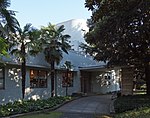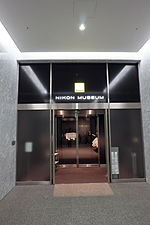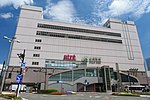Tōkai-ji (Shinagawa)
17th-century Buddhist templesBuddhist temples in TokyoBuildings and structures completed in 1639Commons category link is locally definedDaitoku-ji temples ... and 3 more
Historic Sites of JapanMusashi ProvinceShinagawa

Tōkai-ji (東海寺), is a Buddhist temple located in Shinagawa, Tokyo, Japan. The temple belongs to the Daitoku-ji branch of the Rinzai school of Japanese Zen.
Excerpt from the Wikipedia article Tōkai-ji (Shinagawa) (License: CC BY-SA 3.0, Authors, Images).Tōkai-ji (Shinagawa)
Central Circular Route, Shinagawa Kita shinagawa
Geographical coordinates (GPS) Address External links Nearby Places Show on map
Geographical coordinates (GPS)
| Latitude | Longitude |
|---|---|
| N 35.616169444444 ° | E 139.73893055556 ° |
Address
東海寺
Central Circular Route
140-0002 Shinagawa, Kita shinagawa
Japan
Open on Google Maps










